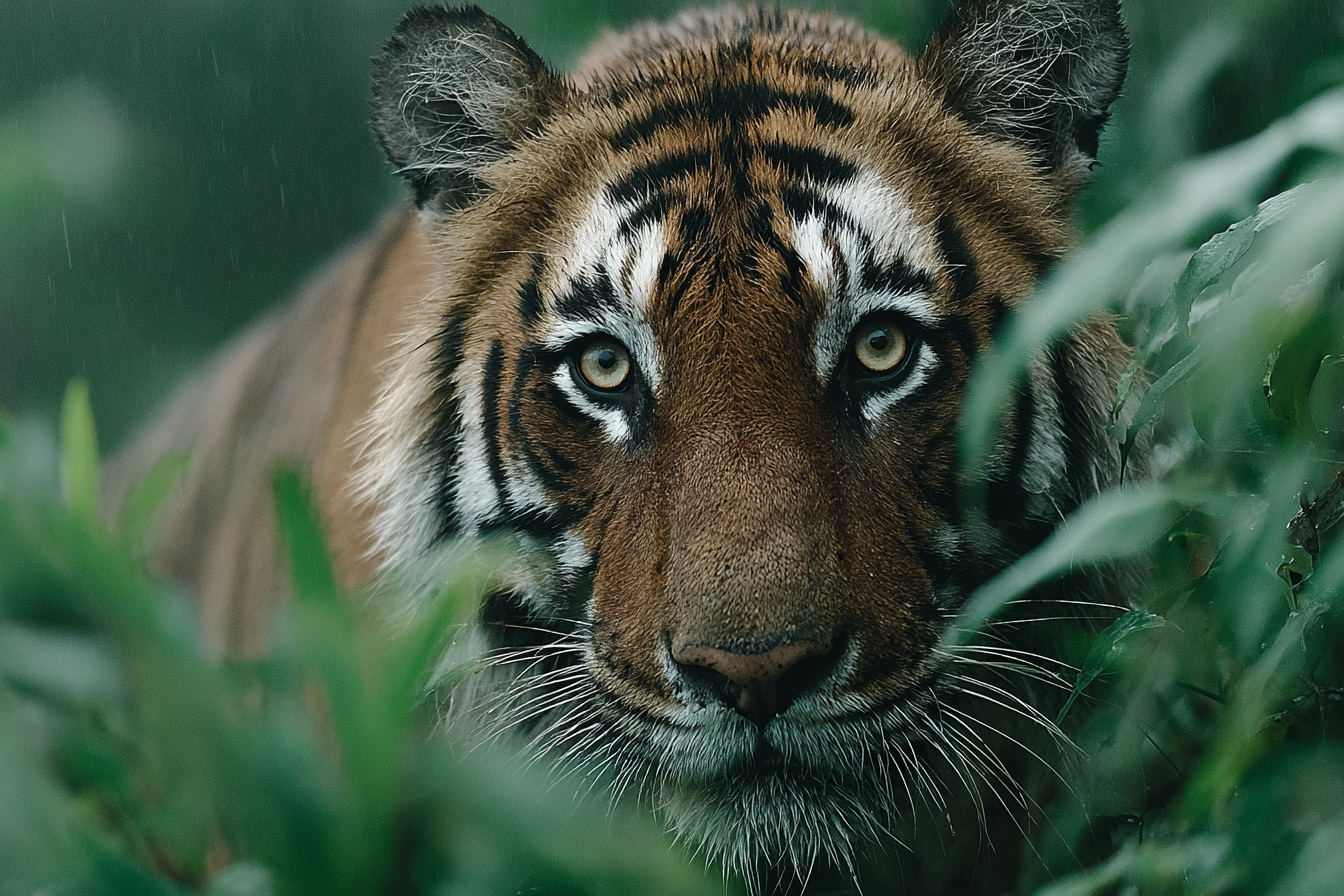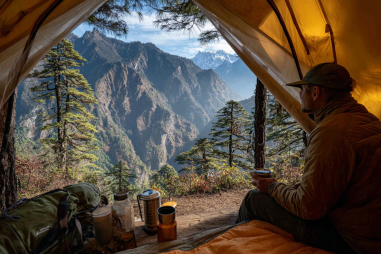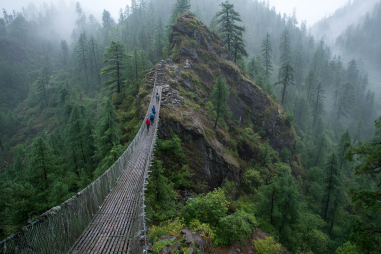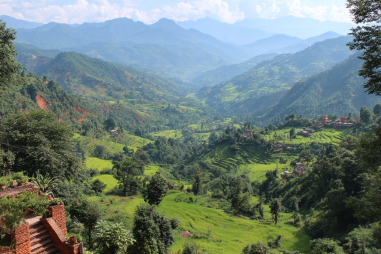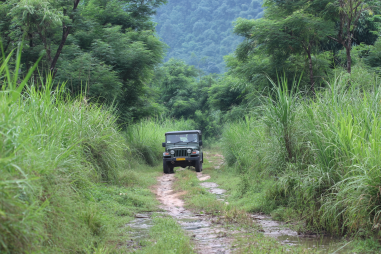Nestled in the heart of Nepal’s Terai lowlands, Bardia National Park stands as a sanctuary for wildlife lovers and nature enthusiasts alike. Far less crowded than the more famous Chitwan National Park, Bardia offers an intimate glimpse into a thriving ecosystem that cradles an impressive array of flora and fauna. From the elusive Bengal tiger prowling through dense sal forests to the mighty one-horned rhinoceros grazing tranquilly by the riverside, the park is a treasure trove of biodiversity. For birdwatchers and wildlife photographers, Bardia is a dream come true, showcasing its vibrant birdlife alongside its charismatic megafauna. If you’re eager to explore one of Nepal’s most pristine and least disturbed wilderness areas, understanding the remarkable wildlife and conservation efforts here is key to appreciating the park’s true magic.
An Introduction to Bardia National Park
Bardia National Park is the largest and most undisturbed wilderness area in Nepal’s Terai region, covering over 968 square kilometers of wilderness. Established in 1988, the park serves as a critical habitat that supports a broad spectrum of wildlife species. Its landscapes range from dense tropical and subtropical forests to grasslands and riverine habitats formed by the Karnali River and its tributaries. This diversity in terrain provides ideal conditions for a wide variety of animals, making Bardia one of Nepal’s richest wildlife reserves.
Unlike the more frequented national parks, Bardia offers a quieter, more solitary experience, allowing visitors to connect with nature in a more authentic way. The park also plays an essential role in Nepal’s conservation efforts, preserving endangered species and promoting biodiversity in the region.
Key Wildlife Species of Bardia National Park
The Bengal Tiger
One of the star attractions of Bardia National Park is undoubtedly the Bengal tiger. The park is home to one of the highest densities of Bengal tigers in Nepal, making it a prime location to witness these majestic cats in the wild. Tigers here are known for their elusive nature, often prowling the dense forests at dawn or dusk. With the help of skilled guides, visitors have a fair chance of spotting these magnificent predators lurking stealthily through the underbrush or resting near water sources.
The One-Horned Rhinoceros
Bardia is also a refuge for the endangered one-horned rhinoceros, another iconic species of the Terai region. These large herbivores can be seen grazing in the grasslands or wallowing in the mud, which helps them regulate body temperature and fend off parasites. Conservation efforts have helped increase their population over the years, making sightings more common during safaris.
Elephants
Wild elephants roam freely in Bardia’s vast forests and grasslands. These gentle giants play a crucial ecological role, helping shape their environment and supporting forest regeneration. While wild elephant sightings can be somewhat unpredictable, Bardia also offers controlled elephant-back safaris that provide unique vantage points for wildlife viewing without disturbing the animals.
Birdwatching Highlights in Bardia National Park
Bird enthusiasts will be in heaven exploring Bardia’s rich avian diversity. With over 400 recorded bird species, including many migratory and endemic birds, the park is a hotspot for birdwatching. The varied ecosystems in Bardia—from dense forests to wetlands and riverbanks—provide habitats for a vast array of birds.
Some of the notable species to look out for include:
- Great Hornbill – Known for its striking casque and vivid colors.
- Slender-billed Vulture – A critically endangered scavenger.
- White-rumped Vulture – Once common but now vulnerable due to habitat loss.
- Kingfishers – Various species flash brilliant blues and greens along waterways.
- Pheasants and Partridges – Such as the Kalij Pheasant, adding splashes of iridescent color.
- Waterbirds – Including herons, storks, and egrets thriving in the park’s wetlands.
For birdwatchers, early morning and late afternoon walks along the riverbanks and in the forest clearings are especially rewarding. Guides can assist by identifying calls and spotting hidden birds.
Conservation Status and Efforts
Bardia National Park plays a vital role in the conservation of Nepal’s endangered wildlife. Over recent decades, the park has been the focus of numerous eco-conservation projects aimed at protecting tigers, rhinos, elephants, and their habitat.
Key conservation initiatives include:
- Anti-poaching patrols: Strong enforcement has been instrumental in reducing illegal hunting and trafficking.
- Community involvement: Locals living around the park are engaged in conservation through awareness programs and sustainable livelihood projects.
- Habitat restoration: Efforts to restore degraded forest areas have helped improve the habitat quality for wildlife.
- Wildlife monitoring: Camera traps and field surveys help track animal populations and behavior to inform management strategies.
- Transboundary cooperation: Since Bardia shares a border with India’s Katarniaghat Wildlife Sanctuary, joint efforts promote safe migration corridors for animals.
Despite its progress, challenges remain, including human-wildlife conflict and occasional poaching threats. Continued vigilance and sustainable tourism practices are essential to safeguard the park’s natural heritage for future generations.
Best Times and Places to Spot Wildlife in Bardia
Timing your visit can greatly enhance your chances of seeing Bardia’s remarkable wildlife. The dry winter months from October to March are generally considered the best time for wildlife viewing. During this period, animals are more concentrated near water sources and the weather is pleasant for exploration.
Some of the prime locations within the park for spotting wildlife include:
- Karnali River banks: Ideal for seeing rhinos, elephants, and a variety of birds.
- Babai Valley: Known for its tiger sightings and diverse habitats.
- Thakurdwara Buffer Zone: A good place to spot deer, wild boar, and sometimes tigers.
- Sal Forests: Dense forest areas where tigers, leopards, and other carnivores dwell.
Early mornings and late afternoons are the best times to venture out, as many animals are more active during these cooler hours. Safaris can be undertaken on jeep, elephant-back, or on foot with experienced guides who understand animal behavior and terrain intricacies.
Tips for Responsible Wildlife Viewing
Respecting the natural environment and ensuring minimal disturbance to wildlife ensures that Bardia remains a thriving sanctuary. Here are some essential tips for responsible wildlife viewing:
- Maintain safe distances: Avoid approaching animals too closely to prevent stress or aggressive reactions.
- Keep noise levels low: Speak softly and avoid sudden movements to increase the chances of observing animals peacefully.
- Do not feed wildlife: Feeding disrupts natural behaviors and diets.
- Follow guide instructions: Guides are trained to help navigate the park safely and ethically.
- Avoid littering: Carry out all trash and use eco-friendly products to protect fragile habitats.
- Choose eco-sensitive accommodations: Support lodges and camps that prioritize sustainability and wildlife conservation.
By following these guidelines, visitors help preserve the tranquility and integrity of Bardia’s wilderness.
Preserving the Natural Heritage of Bardia
Bardia National Park stands as a beacon of Nepal’s commitment to protecting its natural treasures. The park’s vast wilderness, home to elusive tigers, mighty rhinos, majestic elephants, and an astounding variety of birds, encapsulates the essence of wild Nepal. Visiting Bardia offers a rare opportunity to witness nature in its purest form, far from the trappings of mass tourism.
The ongoing conservation efforts and community participations underscore the importance of sustainable interaction with this environment. For those who cherish wildlife and the great outdoors, Bardia is more than just a destination—it is a sanctuary worthy of respect, care, and protection. Discovering the amazing wildlife here not only enriches the soul but also inspires a deeper appreciation for the fragile beauty of our planet.

